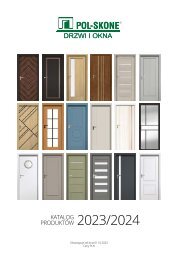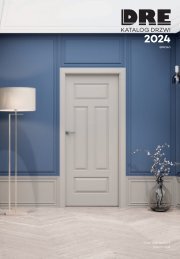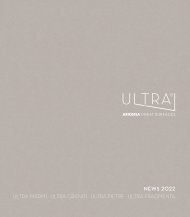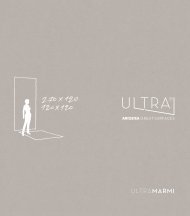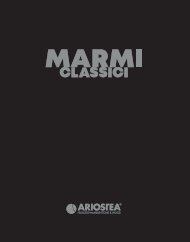You also want an ePaper? Increase the reach of your titles
YUMPU automatically turns print PDFs into web optimized ePapers that Google loves.
SELECTION
Many users of central heating radiators tend to limit the selection process to matching the dimensions of the appliance to the size
of the room where it is to be placed and to choosing the preferred shape and colour (especially true for decorative and bathroom
radiators). Unfortunately, it is not enough to be fully satisfied with the purchased radiator. Appropriately selected radiators not only
provide the required temperature in the room, but, in many cases, influence the cost-effectiveness of the whole central heating system.
It should not be forgotten, either, that a modern radiator offers a number of extra features such as a possibility to work with a variety of
accessories adding to its functionality, some of which come as standard others can be ordered optionally.
Nevertheless, it is still heating the area where it is applied that remains the main role of each radiator. This is why, the efficiency of the
selected radiator should depend on its final localization (e.g.: room, bathroom) and, usually, should slightly exceed the heat demand
in a particular room, especially if the radiator is also intended to be used as towel warmer (in which case the heat exchange surface
is temporarily covered). In some cases, the radiator is not the only source of heat but, merely, an auxiliary one e.g.: with floor heating in
large bathrooms. In this case, the efficiency of the radiator is only a part of the heat demand, sometimes even a negligible one.
EXAMPLE RADIATOR SELECTION DIAGRAM
STAGE I
STAGE II
STAGE III
STAGE IV
Establish the required
heat output based on
the heat demand.
Select radiators with
required output
(at temperature
parameters for
a given central
heating system)
and resistance to
maximum water
parameters in the
system.
Select the models
of the required size,
shape, and the
configuration and
type of connections.
Final selection
based on individual
preferences such as:
extra features of the
radiator, colour etc.
STAGE I
145
In reality, these are the most frequent cases when selecting a new radiator:
• NEW PROFESSIONALLY DESIGNED CENTRAL HEATING SYSTEM
The technical documentation of newly-built houses contains the information drafted by specialists and concerning the heat
demand to be provided for by radiators in each room. Frequently, such documentation includes the author’s suggestion about
particular radiators. We can either accept those suggestions, or apply different, more attractive radiators with comparable heat
output and water and pressure resistance.
• ROOM REDECORATION WITH RADIATOR CHANGING IN MULTI-FAMILY RESIDENTIALS
When changing a radiator in an MDU, the necessary information concerning the output and the temperature and pressure in
the central heating system is given by the building administrator along with their consent to perform such changes. The selected
radiators should have the output as similar as possible to the received specifications and the other parameters (resistance to
temperature and pressure) must not be lower that those provided by the administrator. In order to avoid changing the installation,
the new radiator should have exactly the same connection type and pitch as the one which is being replaced.
• CONSTRUCTION OF CENTRAL HEATING SYSTEM OR RADIATOR REPLACEMENT WITHOUT RELEVANT
DOCUMENTATION IN CASE OF INDIVIDUAL INSTALLATIONS
The most efficient method for selecting an appropriate radiator to cater for the existing heat demand is performing design
calculations in compliance with EN 12831 “Heating systems in buildings. Methods of calculation of the designed heat load”.
This way, all elements influencing the temperature level in the room will be taken into consideration. Selecting radiators without
such calculations we run the risk of having radiators of too low or too high output. Therefore, it is crucial to perform the heat
balance analysis in the room and consider the hints about selection included in the materials provided by the producer
of the radiator. It is a good idea to ask the salesperson or the central heating system specialist performing the work for advice.







